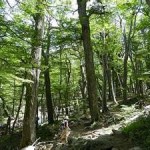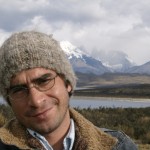Working with a distinguished team of international colleagues, Guillermo Martinez Pastur recently published a global review article on sustainable forestry in BioScience, one of the most read journals in biological sciences. The article places particular emphasis on the example of Tierra del Fuego, where the Forestry Resources Lab at the Austral Center for Scientific Research (CADIC, Ushuaia, Argentina) has pioneered the harmonization of use and conservation in forested ecosystems since the 1990s.
Article Abstra ct: The majority of the world’s forests are used for multiple purposes, which often include the potentially conflicting goals of timber production and biodiversity conservation. A scientifically validated management approach that can reduce such conflicts is retention forestry, an approach modeled on natural processes, which emerged in the last 25 years as an alternative to clearcutting. A portion of the original stand is left unlogged to maintain the continuity of structural and compositional diversity. We detail retention forestry’s ecological role, review its current practices, and summarize the large research base on the subject. Retention forestry is applicable to all forest biomes, complements conservation in reserves, and represents bottom-up conservation through forest manager involvement. A research challenge is to identify thresholds for retention amounts to achieve desired outcomes. We define key issues for future development and link retention forestry with land-zoning allocation at various scales, expanding its uses to forest restoration and the management of uneven-age forests.
ct: The majority of the world’s forests are used for multiple purposes, which often include the potentially conflicting goals of timber production and biodiversity conservation. A scientifically validated management approach that can reduce such conflicts is retention forestry, an approach modeled on natural processes, which emerged in the last 25 years as an alternative to clearcutting. A portion of the original stand is left unlogged to maintain the continuity of structural and compositional diversity. We detail retention forestry’s ecological role, review its current practices, and summarize the large research base on the subject. Retention forestry is applicable to all forest biomes, complements conservation in reserves, and represents bottom-up conservation through forest manager involvement. A research challenge is to identify thresholds for retention amounts to achieve desired outcomes. We define key issues for future development and link retention forestry with land-zoning allocation at various scales, expanding its uses to forest restoration and the management of uneven-age forests.
Article Citation: Gustafsson, L., S.C. Baker, J. Bauhus, W.J. Beese, A. Brodie, J. Kouki, D.B. Lindenmayer, A. Lõhmus, G. Martínez Pastur, C. Messier, M. Neyland, B. Palik, A. Sverdrup-Thygeson, W.J.A. Volney, A. Wayne & J.F. Franklin. 2012. Retention forestry to maintain multifunctional forests: a world perspective. BioScience 62: 633-645.


